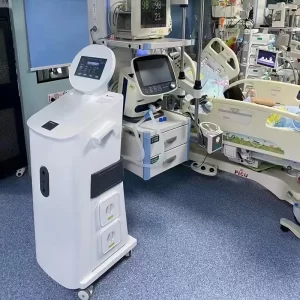Sleep apnea machines and CPAP devices can harbor a significant amount of bacteria. Several factors contribute to the proliferation of bacteria in these devices, including structural and design factors, temperature conditions, nutrient availability, and rapid bacterial growth rates.
Structural and Design Factors:
To minimize noise, sleep apnea machines and CPAP devices are often surrounded by non-cleanable sound-absorbing materials such as acoustic insulation. Additionally, the intake pathway contains various filter materials to prevent large dust particles from entering the airway and protecting the fan. In an effort to reduce size and weight, the airway and electrical circuits are often not separated, allowing bacteria to easily settle on warm circuit boards and fan blades.

Temperature Conditions:
Sleep apnea machines and CPAP devices provide an optimal temperature range (5°C-20°C) for bacterial growth. Prolonged operation of the devices generates heat, but the presence of internal protective layers can impede proper heat dissipation.
Nutrient Availability:
While the filters in these devices can effectively filter out large dust particles, they are unable to filter bacteria. On the contrary, the accumulation of dust, which cannot be easily cleaned, provides a suitable environment for bacteria to thrive and multiply, offering a source of nutrients.
Rapid Bacterial Growth Rates:
Under favorable conditions, bacteria can multiply exponentially, with bacterial populations increasing by a factor of one million within 16 hours. Bacterial growth rates can range from approximately every 15 to 45 minutes, depending on microbial factors.
Effective Disinfection Methods:
To minimize and prevent cross-infection, thorough disinfection of sleep apnea machines and CPAP devices is crucial. The disinfection process should begin with thorough cleaning, especially of components that come into contact with the patient's exhaled breath, such as tubing, heated humidifiers, and exhalation valves (some devices include bacterial filters), as well as internal pathways. Cleaning agents should be used to remove secretions, mucus, bloodstains, and other residues before disinfection. Care must be taken to avoid recontamination during the entire disinfection process. Disassembling various connecting components during disinfection ensures thorough disinfection. After chemical disinfection, the device's pathways should be rinsed with distilled water rather than tap water to avoid unnecessary contamination.

Conclusion:
By strictly adhering to disinfection protocols, the risk of cross-infection can be reduced and avoided. Disinfection of the respiratory pathway system is essential, and different types of sleep apnea machines and CPAP devices may require specific approaches. Additionally, using professional medical equipment with effective disinfection capabilities, such as anesthesia and respiratory circuit disinfection machines, can play a crucial role in ensuring proper disinfection and preventing cross-infections.